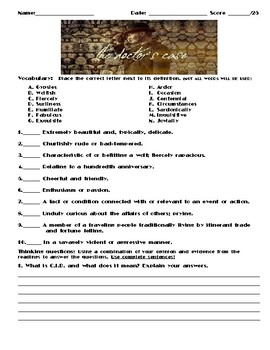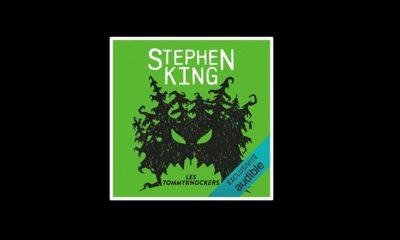

This is ironic since Lovecraft's intention and achievement was pre. In recent years the Mythos at times has seemed in danger of becoming conventionalized. Its function was to suggest, something larger and more terrible than was eye: stated. His Mythos was never coherent nor did it need to be. Lovecraft required a background against which to present his elements of terror, an accumulation of detail which needed only to sound convincing, and he found it in science. It is certainly the classic solution to Lovecraft's problem of combining the tale of terror with science fiction. But only three years later the same method, perfected, could produce a masterpiece in 'The Colour Out of Space': the not subtle Mythos story - one that never mentions a Mythos name, which has led some commentators to exclude it from the listing - and, in my opinion, the finest. In 'The Shunned House' it is the weakest element in a powerful story: the explanation of the haunting, with its 'certain kinetic patterns' continuing-to function in 'some multiple-dimensioned space along the original lines of force,' seems a muddle. He found it not in occultism, which he thought banal, but in a subtle, often vague, blend of science fiction and the supernatural. The search continues the detective-story structure which Lin Carter has analyzed, and which has its roots in Machen's 'Great God Pan,' is yet more skilfully used, but Lovecraft is still seeking a background which will make his horrors both plausible and suggestive. By 1923, in 'The Rats in the Walls,' Lovecraft had refined his method: the story's movement has far less to do with plot than with a gradual accumulation of telling detail, presented with relentless logic the story moves single-mindedly toward terror.

Rather it was a step in Lovecraft's search for the perfect form for the weird tale. So what was the Mythos in the first place?Īugust Derleth has pointed out that it was not a planned development on Lovecraft's part indeed, Lovecraft never even gave it a name. The question needs to be asked for clarity's sake, for the Mythos has been so elaborated and overpopulated, reworked in attempts to give it unity, explained and contradictorily reexplained, that it is now impossible to distinguish a total structure - by no means wholly a bad situation, as I hope to show. What was the Cthulhu Mythos, to begin with? The Faces at Pine Dunes by RAMSEY CAMPBELL The Black Tome of Alsophocus by H.P LOVECRAFT AND MARTIN S WARNES To the memory of August Derleth whose idea this book was. This book is sold subject to the condition that it shall not, by way of trade or otherwise, be lent, re-sold, hired out or otherwise circulated without the publisher's prior consent in any form of binding or cover other than that in which it is published and without a similar condition including this condition being imposed on the subsequent purchaser. No part of this publication may be reproduced, stored in a retrieval system, or transmitted, in any form, or by any means, electronic, mechanical, photocopying, recording or otherwise, without the prior permission of the publishers. Printed and bound in Great Britain by Collins, GlasgowĪll rights reserved. Tales of the Cthulhu Mythos (edited by August Derleth)Ī Division of the Collins Publishing GroupĬopyright c Arkham House Publishers, Inc 1980 The stories in this anthology are thus intended as satisfying contemporary entertainments and as a collective testimony to the darkly enduring power of this strange Rhode Island recluse, the man with the cosmic mind. New Tales of the Cthulhu Mythos is a celebration of Lovecraft's achievement, a tribute to this most influential of twentieth-century American fantasists, by such present-day masters of the genre as Stephen King, Basil Copper, Ramsey Campbell, and T. Mythic deities and alien landscapes emanated in eldritch array, like a litany of maledictions, from the pulp magazines of the era that published his fiction. As a self-professed outsider in his own century, Lovecraft invested his inner visions with such intensity that he was able to will an entire world into being: Great Cthulhu, the blind idiot god Azathoth, the sea-sunken realm of R'lyeh, the infamous Necronomicon. Lovecraft was a mythmaker, a visionary, a conjurer of dreams. Edited, with an Introduction by RAMSEY CAMPBELL


 0 kommentar(er)
0 kommentar(er)
